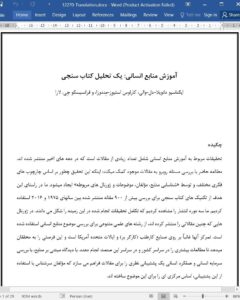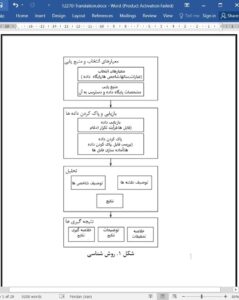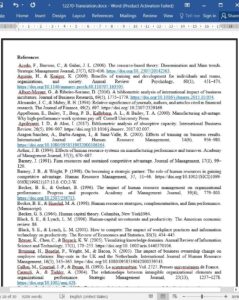Abstract
Research on human resources training has been shaped by a great number of articles published in recent decades. This study contributes to the literature by examining how this research is built on the basis of different intellectual frameworks and by identifying the relevant references, authors, topics, and journals. With this aim, we used bibliometric techniques to examine over 900 articles published between 1975 and 2016. We observed three publication periods that have shaped the evolution of research in this field. In the journals that have published these articles, a wide range of disciplines have been used to address the topic of human resources. The dominant focus is on US and labor-intensive industries, giving researchers the opportunity to undertake further cross-country and cross-industry studies. By considering human capital and performance, the resource-based view provides theoretical support for the articles through which leading authors have built a core grounding for the topic.
1. Introduction
Over the last few decades, technological progress and market evolution have led many companies to redesign their strategies. Many studies state that intangible resources might have provided sustainable competitive advantages in this context (Galbreath, 2005; Hall, 1992, 1993; Lim, Chan, & Dallimore, 2010; Villalonga, 2004). There is some consensus in considering human resources-related intangible assets, grouped as human capital, to be among the best explanatory elements for studying improvements in company performance (Carmeli & Tishler, 2004; Edmans, 2011; Hatch & Dyer, 2004; Liu, van Jaarsveld, Batt, & Frost, 2014; Martín-de-Castro, Delgado-Verde, López-Sáez, & Navas-López, 2011; Rangone, 1999; Villalonga, 2004).
5.1. Limitations and future research
Our study has certain limitations. Although we examined contributions for the whole study period, it may be helpful to perform the same type of analysis for each of the stages identified. This could provide a different perspective on the evolution of indicators and offer a different way to understand possible trends.
As regards the placement of cited references, it would be interesting to use accurate natural language programming, once it becomes available, in order to add meaningful results to these techniques.
Future research on human resources training could aim to fill some of the gaps we highlight. It would be interesting to gain further insights into a broader range of industries and to perform more analyses from an international perspective. Finally, we think that our contribution provides a resourceful foundation on which to develop meta-analyses on this topic.











